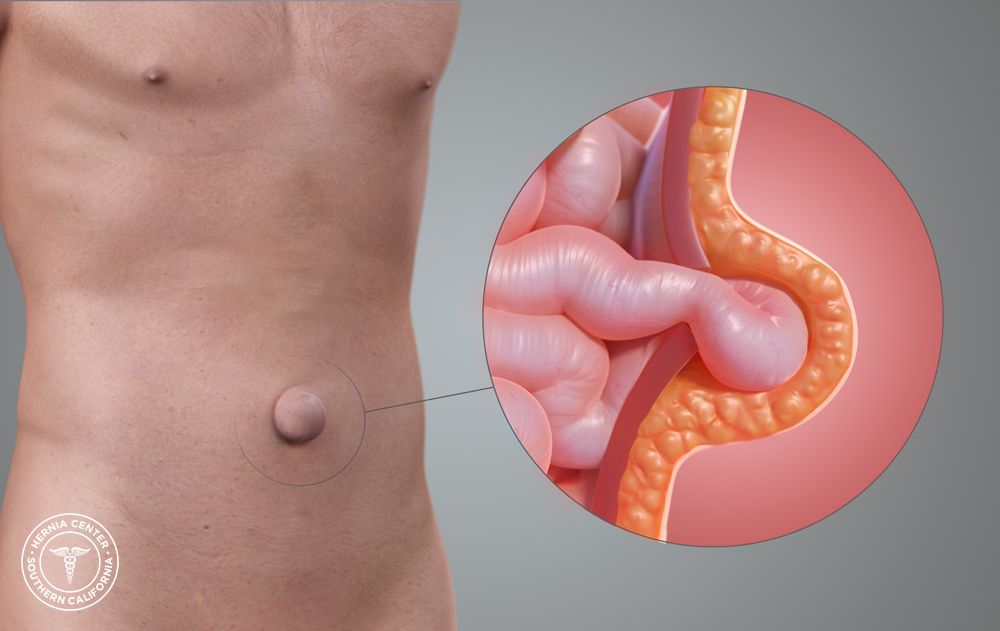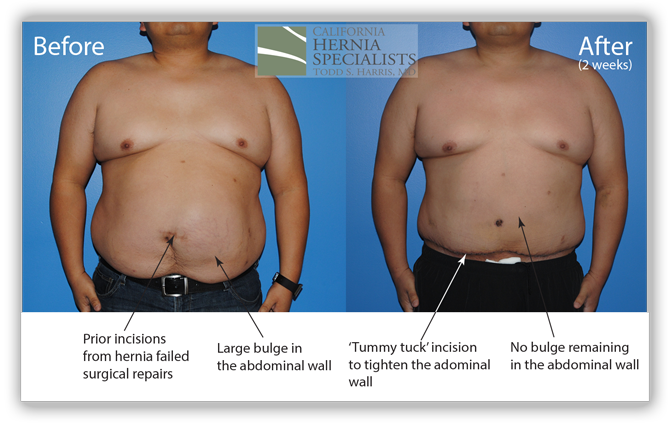Umbilical hernias are generally painless and don’t cause any discomfort. About percent of umbilical hernias will eventually close on their . BufretLignendeOversett denne sidenIntroduction.

A hernia occurs when an internal part of the body pushes through a weakness in the muscle or surrounding tissue wall. An umbilical hernia occurs when part of the intestine protrudes through the umbilical opening in the abdominal muscles. An umbilical hernia is a health condition where the abdominal wall and navel are damaged. An umbilical hernia occurs when part of the bowel or fatty tissue pokes through an area near the belly button, pushing through a weak spot in . Umbilical hernia repair is surgery to repair an umbilical hernia.
An umbilical hernia is a sac (pouch) formed from the inner lining of your belly . An umbilical hernia happens when intestine,fat,or fluid pushes through a weak spot or hole in your baby’s stomach muscles.

An umbilical hernia occurs when intestine, fat, or fluid pushes through a weak spot in the belly. This causes a bulge near the belly button, or navel. Information about umbilical hernia symptoms, diagnosis, treatment and prognosis, provided by Cincinnati Children’s Hospital Medical Center. These hernias can all be called primary midline abdominal hernias.
Umbilical (navel) hernias occur actually in the middle of the navel. Umbilical hernias (UH) comprise of abdominal wall hernias. Conditions that lead to increased intra-abdominal pressure and weakened .

The belly button, or umbilicus, is where the umbilical cord attached the fetus to mother allowing blood circulation to the fetus. There are many types of hernias, but the two most common ones in children involve the abdomen: the umbilical hernia (in the navel or belly button area) and the . Umbilical hernias are commonly found in infants and children. An umbilical hernia is a bulge of intraabdominal organs through an opening in at the base of the . An umbilical hernia is an opening in the muscle wall where the belly button is located.
An umbilical hernia occurs at the umbilicus (belly button) when a loop of intestine pushes through the umbilical ring, a small opening in a fetus’ abdominal . A hernia happens when a section of intestine protrudes through a weakness in the abdominal muscles. Guides through decision to have surgery for an umbilical hernia. Describes symptoms of an umbilical hernia and when they normally occur.
What you need to know about Umbilical Hernias including: risks, signs symptoms, diagnosis and treatment options.